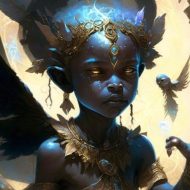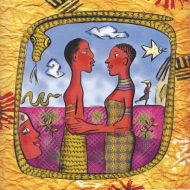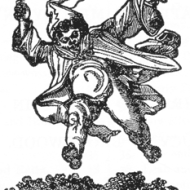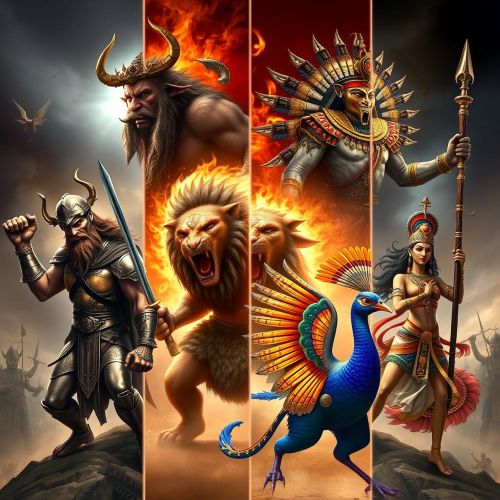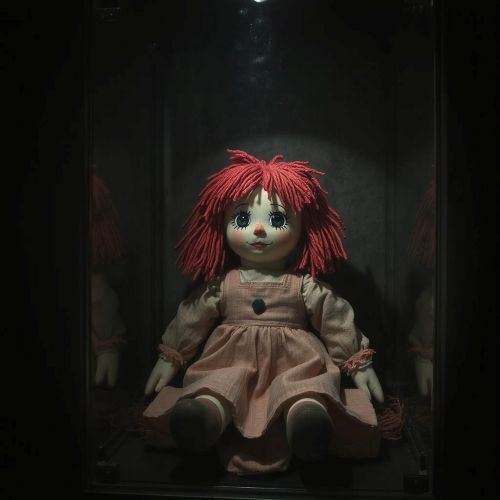Uhlakanyana : The Trickster God
Listen
At a glance
| Description | |
|---|---|
| Origin | African Mythology |
| Classification | Mortals |
| Family Members | N/A |
| Region | South Africa |
| Associated With | Shapeshifting, Trickery |
Uhlakanyana
Introduction
Uhlakanyana is a prominent figure in Zulu folklore. Although he is no longer regarded as a mythological creature, there is still doubt as to his true nature. It is probable that he was a weasel, but the people who told the story forgot about this fact when it was written down. It is not clear why the weasel was chosen, as most Bantu believe that his deeds were carried out by the jackal or hare.
Physical Traits
Uhlakayana was a child who had supernatural abilities, such as being able to transform into various forms. In Zulu mythology, she is depicted as a dwarf-type figure, similar to Tikdoshe.
Family
Xhosa myths state that the child of a woman who was the last female village chief to bear a child is known as Ulakayana. Before they were born, she asked their mother to give birth to her. During this time, she carried out various schemes against the villagers. One of these involved stealing the meat that the men hunted.
In various stories, she and her companions would trick other people into giving them food. One of these involved a woman who got too hot and eventually died. Her corpse was then eaten by her children. There have also been instances where she was killed by the people she tricked. However, in several of these stories, the figure would come back to life.
Other names
She is a trickster figure that is featured in various Xhosa and Zulu mythology also being known as Hlakayana. One of her aliases is Ucakijana, and it means “Little Weasel.” The people who told its story said that Ucakijana was a weasel-like creature due to her small stature and cunning.
Powers and Abilities
In South Africa, there are various types of violent and immoral beings known as the dwarfish faeries. They live in caves and are capable of causing lightning storms and using conventional weapons with ease due to their thick skin. In one story, they are said to have stolen the cubs of a cheetah, causing the animal to cry and develop marks on its cheek. They were eventually defeated by a man from the sky, who was a helpful ultraterrestrial creature. Uhlakayana is known to act according to her malevolent urges. In Xhosa mythology, her intentions are stated to be neutral, and they can be cruel.
Modern Day Influence
Many stories of the trickster is said among the various tribes of South Africa and has either inspired stories among other tribes or been inspired by them. Due to the shared folklore, mythology and tales among the tribes, it becomes difficult to pinpoint where they merge and where it diverges.
Related Images
Frequently Asked Questions
What is lorem Ipsum?
I am text block. Click edit button to change this text. Lorem ipsum dolor sit amet, consectetur adipiscing elit. Ut elit tellus, luctus nec ullamcorper mattis, pulvinar dapibus leo.
What is lorem Ipsum?
I am text block. Click edit button to change this text. Lorem ipsum dolor sit amet, consectetur adipiscing elit. Ut elit tellus, luctus nec ullamcorper mattis, pulvinar dapibus leo.
What is lorem Ipsum?
I am text block. Click edit button to change this text. Lorem ipsum dolor sit amet, consectetur adipiscing elit. Ut elit tellus, luctus nec ullamcorper mattis, pulvinar dapibus leo.
What is lorem Ipsum?
I am text block. Click edit button to change this text. Lorem ipsum dolor sit amet, consectetur adipiscing elit. Ut elit tellus, luctus nec ullamcorper mattis, pulvinar dapibus leo.
What is lorem Ipsum?
I am text block. Click edit button to change this text. Lorem ipsum dolor sit amet, consectetur adipiscing elit. Ut elit tellus, luctus nec ullamcorper mattis, pulvinar dapibus leo.

